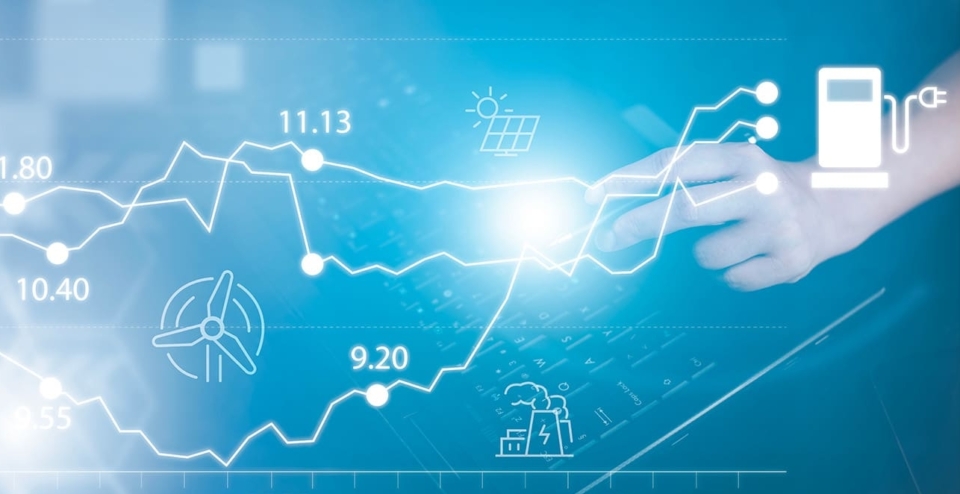
Dynamic rates
The energy market is in a state of flux. With dynamic tariffs and smart technologies, electricity consumption can be better adjusted to fluctuating prices. By anticipating moments with lower tariffs, everyone can save and contribute to a more sustainable network.
Fluctuating prices. Dynamic rates
Discover how Energy Management Systems and smart meters together provide more flexible, cheaper and future-proof energy use. For example, with a fixed or variable tariff, here Enny, Xemex EMS, can optimize a peak or off-peak tariff. With a dynamic contract, the effect of these savings is significantly greater. In short: based on the characteristics of the energy contract, EMS ensures cost optimization.

Always different
The energy market is changing with the growth of renewable energy and fluctuations in supply and demand. This leads to dynamic rates that can change hourly. These rates allow consumers to tailor their energy use to cheaper hours. The result is cost savings and a more efficient and lower use of energy. Combined with an Energy Management System (EMS), users can automatically adjust their consumption.
Low prices
The energy market is changing rapidly with the growth of renewable energy and the need for more efficient energy management. Energy prices today vary much more widely due to fluctuations in supply and demand. This provides new opportunities for users to tailor their energy consumption to price differences. Dynamic rates, which change hourly, allow consumers to plan their energy consumption when the price of electricity is low.
Higher and lower
Dynamic rates are energy prices that vary depending on the supply and demand of electricity. Instead of paying a fixed rate, prices can change hourly or even quarterly. For example, rates may be higher when demand is high, such as in the evening. Rates are lower when demand is low, such as at night. This encourages users to adjust their energy consumption to the cheaper hours.
Few and many
The price of electricity per hour is affected by several factors.
- Supply and demand
When demand is high, prices rise, and when demand is low, they fall. - Weather conditions
Lots of sun or wind can lower the price, due to the availability of a lot of renewable energy. - Production costs
With insufficient renewable energy, traditional power plants must supply more, increasing costs.
Insight and Control
An EMS is an advanced system that helps optimize and manage energy consumption within a building, household, or business. The system uses smart technologies such as sensors, meters, and algorithms to monitor and regulate energy consumption as well as energy generation and storage. The key functionalities of an EMS are explained below.
Energy Management SystemEnergy Monitoring
Self-consumption optimization
Dynamic Load Balancing

Peakshaving

Dynamic rates

Imbalance market
Advantage EMS
The benefits of dynamic rates are enhanced when combined with an EMS An EMS tracks “live” price changes and automatically adjusts the use of energy-intensive equipment. As a result, devices operate during cheaper hours. This makes it easier for users to plan their energy usage and save costs without manual intervention.
Future trends
With the rise of smart grids and more renewable energy, dynamic tariffs and EMS are becoming increasingly important. Smart meters, which provide “live” data on energy consumption, enable users to be more active and efficient in managing their energy consumption.
Read more about Energy Management System (EMS)
The energy market is in full transition, and it’s not happening without fits and starts. Demand for electricity is exploding and renewable sources such as solar and wind continue to depend on the weather. The result: uncertain prices, limitations for consumers and major challenges for our future sustainability. With an Energy Management System, you get the most out of your energy sources without losing comfort.